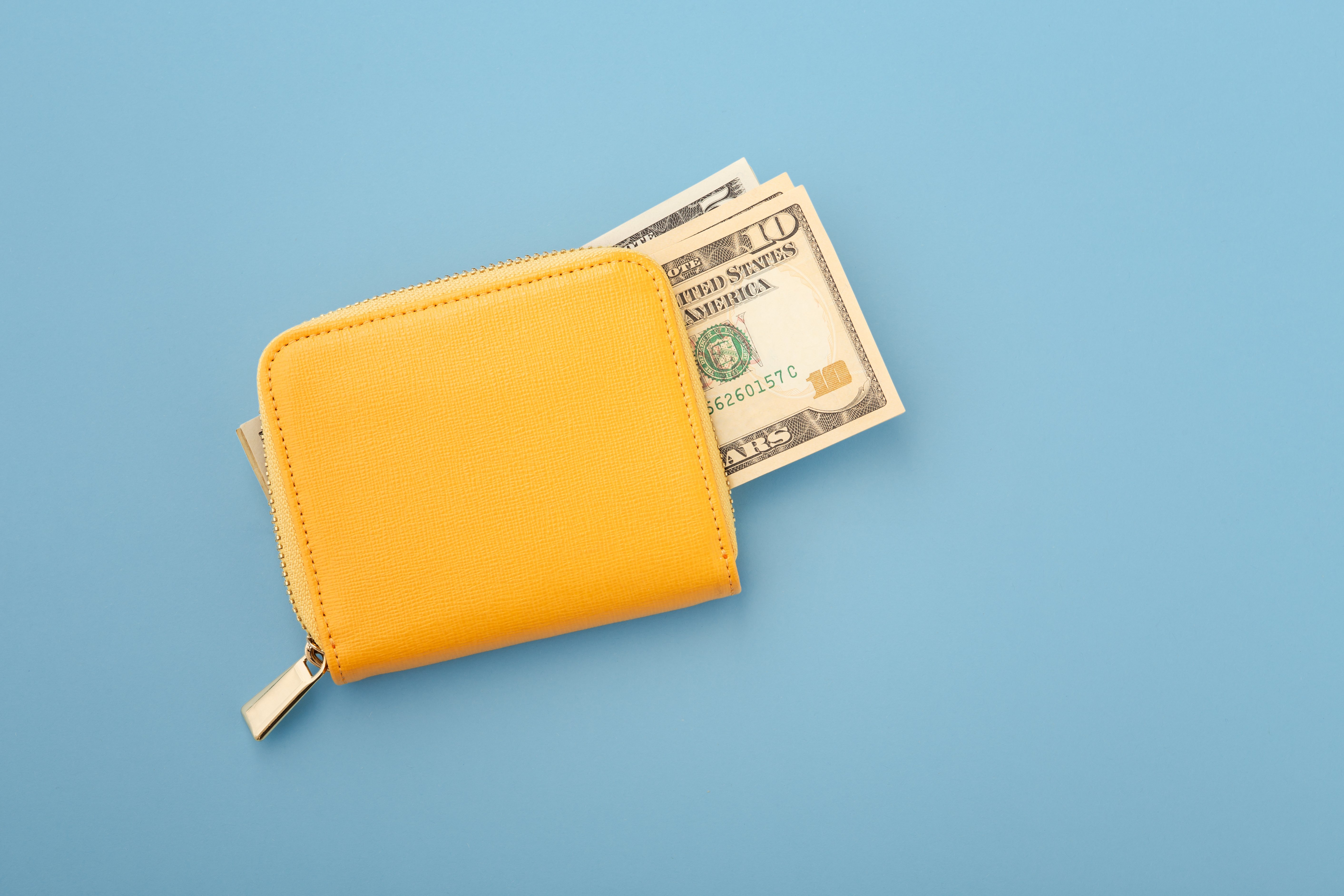End the Monthly Struggle: How to Stop Picking Which Bill to Skip
Every month, millions of Americans play a high-stakes game of financial Tetris, trying to decide which bills can wait until the next paycheck...
Whether you're covering unexpected expenses, making a big purchase, or just need extra cash, our personal loans offer simple, flexible funding tailored to your needs.
Simplify your finances with a loan that combines multiple payments into one. Our consolidation loans help reduce stress and keep your budget on track.
Upgrade your living space with financing designed for renovations, repairs, or remodeling. Our home improvement loans help you enhance your home’s comfort, value, and functionality—on your terms.
Explore expert insights, financial tips, and strategic guidance from the Symple Lending team. Our insights and resource articles are your go-to source for empowering content that helps you make informed decisions on your journey to financial freedom.
Stay up-to-date with the latest press releases, media features, and major announcements from Symple Lending. This section showcases how we're making headlines and driving innovation in the lending industry.
11 min read
Breanne Neely : May 8, 2025 12:00:00 AM

Table of Contents
Did you know that the average person wastes over $1,500 annually on unused subscriptions and inefficient spending habits? In today's economic landscape, where every dollar counts, mastering the art of saving money isn't just about pinching pennies—it's about making intelligent choices that compound over time.
As we navigate through 2025's unique financial challenges, from rising living costs to economic uncertainties, understanding practical ways to save money has never been more crucial. Whether you're building an emergency savings fund, planning for major life goals, or simply looking to gain more financial control and start saving money, implementing smart saving habits can transform your financial future.
Having money set aside provides a safety net when life throws unexpected challenges your way. Building an emergency fund in a separate savings account helps you handle sudden expenses, job changes, or medical bills without going into debt. When you start saving money regularly, you can work toward paying off existing debts faster, which means paying less in interest over time.
Right now, rising prices and market changes in 2025 make smart money management more important than ever. Setting aside money in a savings account helps protect you from economic uncertainty while moving you closer to your financial dreams - whether that's buying a home, continuing your education, or preparing for retirement.
Think of saving as giving yourself options and peace of mind. When you build strong saving habits, you're better prepared to weather financial storms and take advantage of opportunities. Even small, consistent deposits add up over time, creating financial stability that lets you set savings goals based on what you want rather than what you can afford.
Start by listing all your income and expenses to understand where your money goes each month. Look at your bank statements and receipts to get an accurate picture of your spending habits. Group your expenses into categories like housing, food, transportation, and entertainment.
Set realistic spending limits for each category based on your income and financial goals. Many free budgeting apps and spreadsheet templates can help you track your money - pick one that fits your lifestyle and is easy to use.
Check your budget weekly to stay on track. Make adjustments when needed, especially if your income or expenses change. Remember that a budget isn't set in stone - it should change as your life does.
If you're new to budgeting, start small. Focus on one or two spending areas you want to improve. As you get comfortable with those changes, expand your budget to include more categories. This step-by-step approach makes tracking your expenses feel less overwhelming and more manageable.
Set clear, measurable targets for your money by using the SMART method. Break down each goal into specific amounts and deadlines - like saving $5,000 for a down payment within 18 months. This makes your goals feel more real and helps you track your progress.
Look at both your short-term needs (like building an emergency fund) and long-term dreams (such as retirement). Put your goals in order of importance, but stay flexible. As your life changes, you might need to adjust your priorities.
Make saving money more rewarding by setting small milestones along the way. When you hit these mini-goals - maybe saving your first $500 or one month's expenses - take a moment to celebrate. Keep a visual reminder of your progress, like a simple chart on your fridge or a tracking app on your phone. Automating your savings can help you stay focused when saving gets tough.
Remember, any amount saved is better than none. Start with what you can manage today and gradually increase your savings as your situation improves.
Setting up automatic transfers takes the guesswork out of saving money. When you link your checking account to a savings or investment account, you can schedule regular transfers that happen without any extra effort on your part. This way, you won't forget to save or spend the money elsewhere.
Most banks or credit unions let you set up these transfers through their website or mobile app in just a few minutes. You can pick the amount, frequency, and timing that works best with your paycheck schedule. Whether it's $20 each week or $200 each month, the key is making it happen automatically.
Many money-saving apps now offer features that round up your purchases to the nearest dollar and put the difference into your savings account. Some will even analyze your spending patterns and track your monthly expenses when you can afford it. These tools make building up your savings account feel effortless - you might not even notice the money moving, but you'll see your balance grow over time.
Watching your spending helps you spot opportunities to save money and stick to your financial plans. By checking your accounts often, you can catch overspending early and make quick fixes to stay within your budget.
Pick a method that fits your schedule - some people like daily check-ins, while others prefer weekly or monthly reviews. Many banking apps show your spending by category, making it easy to see where your money goes. A simple spreadsheet can also work well for tracking your monthly expenses.
Set aside time each week to look at your recent purchases. Ask yourself if each expense matches your money goals. Look for patterns in your spending - maybe you're buying lunch more often than planned, or your grocery bills are higher than expected. These regular check-ins help you make smart choices about your money and find extra dollars to save.
Remember to review your fixed costs too, like rent and utilities. Sometimes these expenses can change, and catching increases early helps you adjust your budget quickly.
Take a close look at your monthly bills to find recurring charges for services you rarely use. Many people pay for multiple streaming platforms, digital magazines, or apps they've forgotten about. Make a list of all your subscriptions and mark the ones you haven't used in the past month.
Cancel services right away that don't give you good value for money. Most companies let you end subscriptions through their websites or apps. Set a reminder to review your monthly expenses every few months - new subscriptions can sneak in without you noticing.
Look for free options to replace paid services. Your local library might offer free streaming through apps like Kanopy or Hoopla. Many news websites provide free articles each month, and free apps often work just as well as paid versions. Public radio and ad-supported streaming can replace paid music services. These small changes add up - cutting just $30 in monthly subscriptions saves $360 per year that you can put toward your savings goals.
Make your everyday spending work harder by using cash back apps and loyalty programs. Look for credit cards that give rewards on purchases you already make, like groceries or gas. Many stores offer free loyalty programs that give points or cash back on regular shopping.
Download popular cash back apps to scan your receipts or link your credit cards. Before you shop, check if your credit card offers bonus points at specific stores. Remember to pay off your credit card balance in full each month - interest charges can wipe out any rewards you earn.
Set calendar reminders to track and redeem points before they expire. Some programs let you transfer points between accounts or convert them to cash deposits. Compare different programs' benefits to find ones that match where you shop most often. Don't sign up for store credit cards just for a one-time discount - focus on programs that reward your regular spending habits.
Consider using a rewards program tracking app to manage all your loyalty accounts in one place. This helps you spot the best deals and avoid missing out on savings opportunities.
Plan your shopping trips by making a detailed list based on weekly meal plans. Check store flyers and apps for sales before you go, and stick to your list to avoid impulse purchases. Many stores offer digital coupons you can load directly to your loyalty card.
Look for markdowns on items approaching their sell-by date, especially in the meat and produce sections. Stock up on non-perishable staples when they're on sale - items like pasta, canned goods, and paper products store well and save money long-term. Compare unit prices rather than package prices to find the best deals.
Shop at different stores to take advantage of each one's best prices. Discount grocers often offer similar products at lower costs than major chains. Buy store brands instead of name brands when possible - they're usually made by the same manufacturers but cost less. Consider joining store loyalty programs to earn points and receive member-only discounts on items you regularly buy.
Watch for major sales throughout the year to save money on big purchases. Back-to-school season brings deals on office supplies and electronics in late summer. Black Friday and Cyber Monday offer significant markdowns on appliances and tech items. After-holiday clearances in January feature deep discounts on winter clothing and holiday decor.
Keep a running list of items you need and match them to upcoming sales events. Many retailers mark down seasonal items at predictable times - winter coats go on sale in February, patio furniture in September, and TVs before major sporting events.
Set price alerts on shopping apps for specific items you want to buy. This helps you track price drops and spot genuine deals. Remember that some "sales" aren't real bargains - know typical prices for items on your list before buying. Consider buying off-season when prices drop - like purchasing a grill in fall or holiday decorations in January. Many stores also offer additional savings when you stack coupons with seasonal markdowns.
Simple changes to your home can lead to big savings on your utility bills. Switch out old light bulbs for LED versions - they use less electricity and last much longer. When buying new appliances, look for models with ENERGY STAR labels, which can cut your power usage significantly.
Keep your home cozy and your bills lower by sealing air leaks. Add weatherstripping around doors and windows to stop drafts. Check your attic insulation - adding more if needed helps maintain indoor temperatures year-round. Put foam gaskets behind outlet covers on exterior walls to prevent cold air from sneaking in.
These updates pay off over time. LED bulbs can save about $75 per year in electricity costs when replacing traditional bulbs throughout your home. A properly sealed and insulated house might reduce heating and cooling expenses by 15%. Energy-efficient appliances can lower your utility bills by $100-200 annually per device. While some upgrades need upfront money, the monthly savings make them worth considering, especially if you plan to stay in your home long-term.
Take 30 minutes each week to outline your meals and create a shopping list. This simple step helps you buy only what you need and makes the most of ingredients across multiple dishes, and is one of the most common ways to save money. When you know what you'll cook each day, you're less likely to order takeout on busy nights.
Making food at home typically costs one-third of what you'd spend on restaurant meals. A $30 takeout dinner for two could cost just $10 when prepared in your kitchen. Plus, you control portion sizes and ingredients, leading to budgeting your food expenses more effectively.
Store food properly to make it last longer. Keep fruits and vegetables in the right spots in your fridge - leafy greens in crisper drawers, tomatoes on the counter. Turn leftover roasted chicken into soup, sandwiches, or salads throughout the week. Freeze extra portions of casseroles or stews for quick future meals. Check your fridge before shopping to prevent buying duplicates and keep a "use first" box for items nearing their best-by date.
Making the switch to public transit or sharing rides can put more money in your pocket. By leaving your car at home, you'll spend less on gas, parking fees, and regular maintenance. A monthly transit pass often costs less than what you'd spend on fuel alone, while carpooling lets you split gas costs with others.
Think about your daily commute costs - including wear and tear on your vehicle, insurance, and parking fees. You could save hundreds of dollars each month by taking buses or trains instead of driving. Some employers offer transit benefits or pre-tax programs that reduce transportation expenses even further.
Beyond saving money, sharing rides helps protect the environment. Each person who switches to public transit or carpooling takes one more car off the road, reducing traffic and air pollution. Many cities now have user-friendly apps that make finding carpool partners or planning bus routes simple. Look for local rideshare groups on social media or ask coworkers about starting a carpool rotation. Even sharing rides just two or three days a week can make a difference in your monthly budget.
Take time each month to review your regular bills. Check your existing auto insurance policy and ask about bundling policies or raising deductibles to lower premiums. Check if your cell phone plan matches your actual usage - you might save by switching to a cheaper plan or moving to a different carrier. Review your existing homeowners insurance policy and compare rates to see if you have the potential to start saving there.
Compare rates from multiple providers for services like internet and streaming. Many companies offer new customer discounts, and telling your current provider about better deals elsewhere might lead to price matching. Ask about available promotions or seasonal specials.
Look at your utility bills for patterns in usage. Simple changes like adjusting your thermostat or installing a programmable model could reduce monthly costs. Consider switching to paperless billing - many companies offer small discounts for this option.
Keep notes about when contracts end and set calendar reminders to track these expenses before renewal time. Some services offer yearly prepay discounts that can save hundreds compared to monthly payments. Remember that small changes to multiple bills can make a big impact on your savings goals based on your reduced expenses.
Having money set aside for unexpected costs gives you financial protection when you need it most. Most financial experts suggest saving 3-6 months of living expenses in an easily accessible savings account. Start with a goal of $1,000 and build from there - even small amounts help create a safety net.
Open a separate savings account specifically for emergencies to avoid mixing these funds with regular spending money. Look for accounts offering competitive interest rates but allowing quick access when needed. Many online banks provide higher yields than traditional institutions.
Begin by setting up automatic transfers from your paycheck, even if it's just $25 or $50 per month. Use windfalls like tax refunds or bonuses to boost your fund faster. As you build the habit of regular saving, try to increase your contributions gradually.
Keep your emergency money in a safe place - avoid investing these funds in stocks or other risky options. The goal is having cash ready when you need it, not growing wealth long-term. Review your savings account's size annually as your expenses change.
Your local community likely offers many no-cost activities that are both fun and budget-friendly. Visit public parks for walking trails, playgrounds, and outdoor exercise. Many museums have free admission days each month, while libraries provide books, movies, and games at no cost. Check your library's schedule for free classes, workshops, and children's story times.
Look up your city's events calendar for free concerts, festivals, and cultural celebrations. Many towns host movie nights in the park during summer months or free holiday celebrations throughout the year. Community centers often run low-cost fitness classes and hobby groups.
Online platforms offer plenty of free entertainment too. YouTube channels teach everything from cooking to crafts, while many streaming services have free, ad-supported options. Public radio stations stream music and programs online without charge. Local Facebook groups and community boards list upcoming free events and meetups in your area. Remember to check college and university calendars - they frequently host free lectures, art shows, and performances open to the public.
Meet Sarah and Mike, who saved $450 monthly by budgeting. They canceled five streaming services they rarely watched ($70), switched to LED bulbs and smart power strips ($55 savings), and started meal planning ($325 less on groceries and takeout). They put this money toward paying off credit card debt.
Alex, a 25-year-old software developer, built a $10,000 emergency fund in 18 months. She set up automatic transfers of $400 monthly from her paycheck to a high-yield savings account. She also used cash back apps while grocery shopping and deposited the rewards directly into her savings account, adding another $30-40 monthly. When she received her annual bonus, she put 75% toward her emergency fund.
The Martinez family saved $8,200 in one year by making smart money choices. They tracked every purchase in a simple spreadsheet, shopped sales for necessities, and used the library instead of buying books and movies. Their kids learned to save by putting half their allowance into piggy banks, showing how small changes add up to big results.
Successfully saving money isn't about dramatic lifestyle changes or extreme sacrifices—it's about making informed decisions and developing sustainable habits. By implementing these practical tips, from automating your savings to making energy-efficient upgrades, you're not just saving money; you're investing in your financial well-being and peace of mind.
Remember, every financial journey starts with a single step. Begin with the strategies that feel most manageable to you, and gradually incorporate more ways to save money as you build confidence. Your future self will thank you for the financial foundation you're building today.
Disclaimer: The information provided in this blog post is for educational and informational purposes only and should not be considered as financial, legal, investment, or tax advice. Symple Lending is not responsible for any financial outcomes resulting from following the information or ideas shared in this blog. Every individual's financial situation is unique, and we strongly encourage readers to take their own circumstances into consideration and consult with a qualified financial, legal, tax, and investment advisor before making any financial decisions. Symple Lending does not provide financial, legal, tax, or investment advice.

Every month, millions of Americans play a high-stakes game of financial Tetris, trying to decide which bills can wait until the next paycheck...

Ever glanced at your loan paperwork and wondered why there are two different percentage numbers? It's not a typo; it's the crucial distinction...

Did you know that a majority of financial resolutions are abandoned by mid-February? It’s a startling statistic that reveals a crucial truth: the...

Did you know that the average 50-year-old has only $117,000 saved for retirement—far short of the recommended $1 million? Many midlife adults find...

Have you ever reached the end of the month wondering where your money disappeared to? You’re not alone. The average household leaks over $1,800...

Are you ready to start the journey toward financial freedom but are unsure how to get started? Perhaps you are struggling with managing your finances...